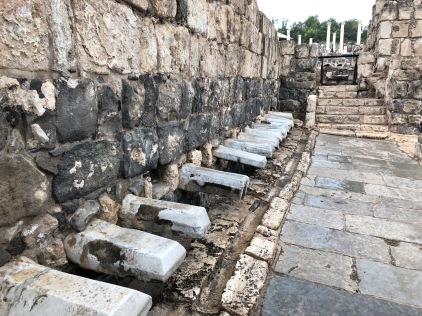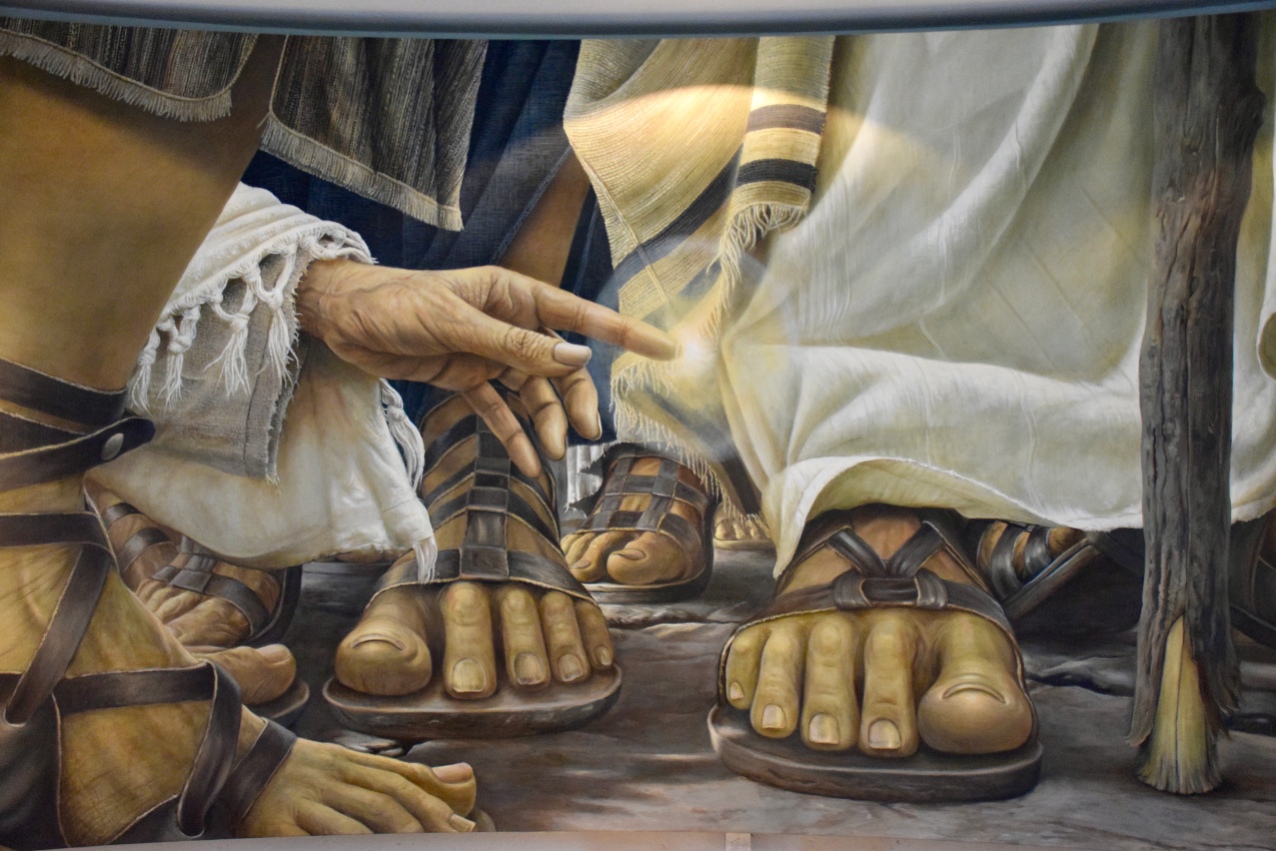All incoming students at JUC are required to take “Physical Settings of the Bible.” This is classified as a geography course, yet the content is much richer than simply studying the geography of the land of Israel. The course covers the features of the of the land of the Bible with an emphasis on how they impact the settlement, travel, communication and history of the land. We cover every region of the land of the Bible (there are 29 of them if you were wondering). We study the geography, geology, weather patterns, hydrology, archeology, major sites, primary highways and roads as well as relevant Biblical texts where these come into play. Preparation for the course included rigorous mapping exercises covering every region. As my instructor put it, the land is a character throughout the Biblical story. We need to understand how this character works and influences the Text if we are to understand the fuller and richer meaning of the Bible.
An important component of this course are the field studies. There are 8 of them in total. Initially, they started small: single day field studies in and around Jerusalem. The final 3 trips are multi-day affairs. Last week, we completed our “Galilee” field study. This four-day trip covered much of northern Israel, including the Galilee. According to my iPhone, we hiked almost 29 miles and climbed the equivalent of 156 flights of stairs. (Note: I have learned that the iPhone “health” app uses a very dubious calculation for a flight of stairs. It would be better if they simply calculated elevation gain). Needless to say, A LOT of it was uphill.
I’ve included some photos of various sites that we visited with some very brief explanations.
Caesarea:
The land of ancient Israel only had one seaport: Akko. This port was so far north that it really only served the Jezreel Valley and Galilee areas. This wasn’t much of an issue for Israel as they were desert people who were VERY uncomfortable with large bodies of water. For most of their history, they left the sea traffic to their friends, the Phoenicians.
However, Herod the Great was different. He decided to make a seaport that was more useful for the rest of the country. So, he took a small Hellenistic site (Stratos Tower) and decided to build a city with a man-made port. In typical Herod fashion, nothing was done halfway. He employed the latest in Roman building technology—a new type of cement that would harden underwater to help fashion his port. He built a major palace that jutted out into the Mediterranean sea with a swimming pool. He built a theater and a Hippodrome. He brought in fresh water from the Carmel mountain range that was a few miles away. The city included a temple to Roma, the goddess of Rome as well as a temple to the newly deified Caesar Augustus—one of 3 that he built in the land. In essence, he built a very Greco-Roman city in a very Jewish land in the span of just a few years. The ruins of this site are still impressive to behold.
Beth-Shean/Scythopolis
The eastern end of the Jezreel valley feeds into the Harod pass that cuts between Mt. Gilboa and Mt. Moreh. The Harod pass connects the Jezreel valley with the Rift Valley and Transjordan. Throughout ancient history, this has been a well-travelled path for east-west traffic and trade routes. Guarding the eastern entrance to this gateway is Beth-Shean/Scythopolis. A lot of biblical history takes place within a short distance from Beth-Shean. Most notable is probably the final battle of King Saul’s reign where he was defeated by the Philistines. Saul and his son Jonathan are beheaded and their bodies were hung on the city wall of Beth-Shean. At another point in history, Beth-Shean was a major Egyptian city. In fact, more Egyptian artifacts have been found at Beth-Shean than at any other site outside of Egypt.
Eventually, Beth-Shean is replaced by the Greco-Roman city Scythopolis, which sits against the southern base of the Beth-Shean tel. This was one of the Decapolis cities at the time of Jesus. It was the only Decapolis city west of the Jordan river. This was a major Roman city that was eventually destroyed by an earthquake. One of my favorite parts of the site is the public restroom (photo below). There was a channel of running water than ran the course of the room to whisk away anything one might choose to deposit. The marble “seats” (you sit in between them) are surprisingly comfortable.
Magdala
One of the most meaningful sites for me on this field study was Magdala. This site is being excavated by a Mexican catholic organization. So far, they have uncovered some very interesting things—including a synagogue from the 1st century AD. Assuming that the synagogue was built before 30 AD, then it would be VERY likely that Jesus taught in this synagogue. It is also clear from the excavations that Magdala was a pretty well-to-do place.
Magdala is most remembered as the home of “Mary Magdalene” in the New Testament—one of Jesus followers and supporters. It has wrongly been interpreted that she was a prostitute or woman of sinful character. The biblical text says nothing of the sort. I believe it was a pope that got confused about this and the stigma stuck. Mary of Magdala is mentioned alongside some other women that were financial supporters of Jesus and his disciples. It is very possible that she too was a woman of means that provided financial support to Jesus’ ministry.
In light of this, the Mexican catholic group that runs the site has built the “Duc in Altum” that commemorates the public life of Jesus and honors the women who followed Jesus. In the atrium are 8 pillars. Seven of them hold the names of women who followed Jesus. The 8th pillar is blank to honor women of faith of all time. There is a stunning painting of the woman touching the fringe of Jesus garment in one of the chapels. Several other chapels have mosaics covering key events in Jesus Galilee ministry.
Miscellaneous Photos:
Below are a collection of additional photos from the trip.

























Well done Rob. Really appreciate the photos too. That one of hem being touched — wow.
Keep ’em coming.
LikeLike
Loved this geography lesson and the wonderful photos. Brings back lots of special memories.
LikeLike
Beautiful descriptions and pictures! Thank you for sharing your journey!
LikeLike